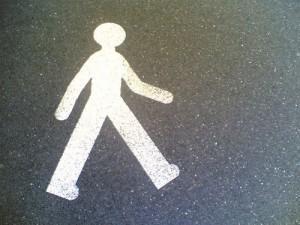 Previous posts discussed the various keys to sustainability, including fully funded transit, complete streets, leveraging public land, and quality open space, with the presumption being that these types of decisions are good for a community’s economy, environment, and social equity. Now, emerging research is showing that moving cities from car-oriented development patterns to more compact, mixed use (i.e. sustainable) forms can also have a dramatic effect on public health.
Previous posts discussed the various keys to sustainability, including fully funded transit, complete streets, leveraging public land, and quality open space, with the presumption being that these types of decisions are good for a community’s economy, environment, and social equity. Now, emerging research is showing that moving cities from car-oriented development patterns to more compact, mixed use (i.e. sustainable) forms can also have a dramatic effect on public health.
In 2004, Urban Sprawl and Public Health: Designing, Planning, and Building Healthy Communities was the first to explicitly connect sprawl with human well-being. Sitting in traffic is detrimental to one’s health, reduces life expectancy, increases healthcare costs, and further isolates people, especially the elderly. These effects can be seen in American cities. For example, in San Antonio, Texas, 1 out of 3 children and 2 out of 3 adults are obese.
The most obvious way to get people to walk more is to create places that people want to walk to. One survey by the Robert Wood Johnson Foundation (RWJ) found that elderly people would use a park simply if there was one within walking distance. The RWJ Foundation is one of the leaders in improving health outcomes through research and action. One of their programs, Active Living by Design, is working to change the built environment so that physical activity is a part of everyday life. Another policy that aids in creating more walkable places is encouraging developers to build less parking, thereby creating places with more housing and people.
While programs are growing and succeeding, priorities and funding are still slanted towards roads. Here in Washtenaw County, Michigan, 80% of funding goes to roads, 10% for mass transit, and 10% for non-motorized systems (walking or bicycling). By changing rules so as to make compact, walkable development the norm and directing more funding towards mass transit and non-motorized transportation, we can have not only healthier urban economies, but healthier neighbors.
Image Source

